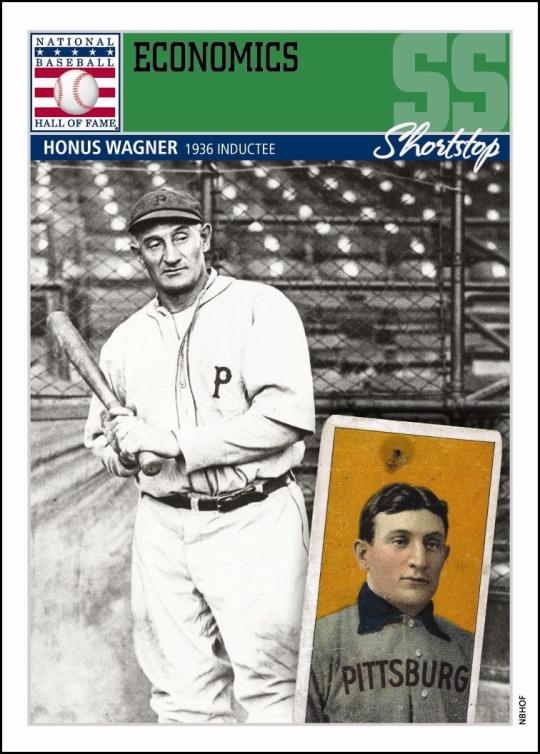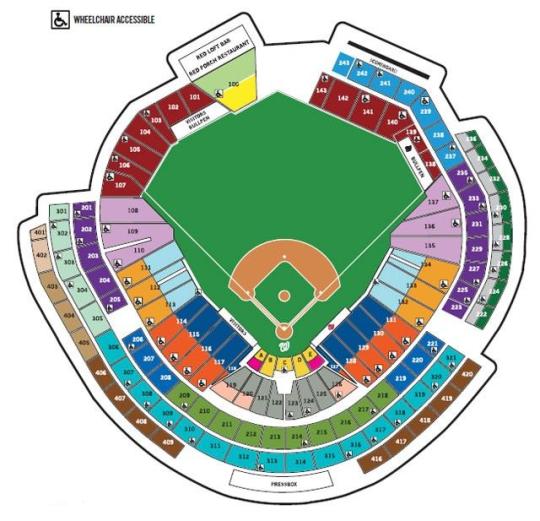Lesson 3: (Pre-Visit) The Cost of Being a Fan (Intermediate)
Lesson
Activity
There’s no doubt about it, going to a professional sporting event is expensive! How does a ballgame compare to other forms of family entertainment?
1. Divide the students into several groups.
2. Give each group a copy of the Fan Cost Index for 2011. Explain that The Fan Cost Index measures what it would cost a family of four to attend a major league game at any given stadium. The cost of attendance includes: four average price tickets, parking for one car, four small sodas, four hot dogs, two small beers, two game programs, and two souvenir caps.
3. Have each group choose a recorder. Allow each group a few minutes to look over the Fan Cost Index and record observations on the various prices. Where would it cost the most to attend a game? Where would it cost the least?
4. How does the cost of attending a professional baseball game compare to the cost of other family entertainment options? Give each group a copy of the Arts & Entertainment section of your local Sunday newspaper or have them go online and compare the cost of five different entertainment options.
5. Each group should calculate the cost of their 5 chosen entertainment activities for a family of four!
6. Once all groups are finished, ask each group to volunteer one or two of the activities they researched and what those activities cost. Keep a running list on the board for comparison.
7. Once all groups have reported, ask the class how the cost of a baseball game compares with the cost of the entertainment options they found? Which entertainment options are most affordable for a family of four?
Conclusion:
To conclude this lesson, review with your students the relationship between supply and demand and ticket prices. What factors influence supply? What factors influence demand? To check for understanding, have students write a response essay explaining under what circumstances a team would choose to lower ticket prices, and under what circumstances a team would choose to raise prices.
Common Core Standards
CCSS.ELA-Literacy.RI.6.7 Integrate information presented in different media or formats (e.g., visually, quantitatively) as well as in words to develop a coherent understanding of a topic or issue.
CCSS.ELA-Literacy.W.6.4, W.7.4, W.8.4 Produce clear and coherent writing in which the development, organization, and style are appropriate to task, purpose, and audience.
CCSS.ELA-Literacy.W.6.7 Conduct short research projects to answer a question, drawing on several sources and refocusing the inquiry when appropriate.
CCSS.ELA-Literacy.W.6.8 Gather relevant information from multiple print and digital sources; assess the credibility of each source; and quote or paraphrase the data and conclusions of others while avoiding plagiarism and providing basic bibliographic information for sources.
CCSS.ELA-Literacy.W.6.9, W.7.9, W.8.9 Draw evidence from literary or informational texts to support analysis, reflection, and research.
CCSS.ELA-Literacy.W.7.7 Conduct short research projects to answer a question, drawing on several sources and generating additional related, focused questions for further research and investigation.
CCSS.ELA-Literacy.W.7.8, W.8.8 Gather relevant information from multiple print and digital sources, using search terms effectively; assess the credibility and accuracy of each source; and quote or paraphrase the data and conclusions of others while avoiding plagiarism and following a standard format for citation.
CCSS.ELA-Literacy.W.8.7 Conduct short research projects to answer a question (including a self-generated question), drawing on several sources and generating additional related, focused questions that allow for multiple avenues of exploration.
CCSS.Math.Content.6.NS.B.3 Fluently add, subtract, multiply, and divide multi-digit decimals using the standard algorithm for each operation.
CCSS.Math.Content.6.SP.A.1 Recognize a statistical question as one that anticipates variability in the data related to the question and accounts for it in the answers.


